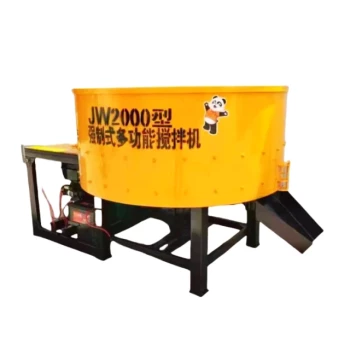The drum design of a concrete mixer truck plays a crucial role in maintaining and enhancing the quality of concrete during transportation and mixing. Its structural and functional elements, such as the internal turbines, spiral blades, durable metal construction, and size adaptability, collectively ensure uniform mixing, prevent premature setting, and preserve workability. These features are engineered to withstand the rigors of mixing and transport, ensuring that the concrete remains consistent and ready for use upon arrival at the construction site.
Key Points Explained:
-
Uniform Mixing Through Internal Turbines and Spiral Blades
- The drum's internal turbines and spiral blades are designed to agitate the concrete continuously, preventing segregation of aggregates and ensuring a homogenous mixture.
- This uniform mixing is critical for achieving consistent strength and durability in the final concrete product.
-
Prevention of Premature Setting
- The continuous rotation of the drum, aided by the spiral blades, keeps the concrete in motion, which delays the setting process.
- This is especially important during transport over long distances, as it ensures the concrete remains workable until it is poured.
-
Durable Metal Construction
- The drum is typically made of high-quality, wear-resistant metal to endure the abrasive nature of concrete mixing.
- This durability minimizes maintenance needs and extends the lifespan of the mixer truck, ensuring consistent performance over time.
-
Size Adaptability Based on Truck Capacity
- Larger drums are used for higher-capacity trucks, allowing for efficient mixing and transport of larger concrete batches.
- The design ensures that the mixing efficiency is maintained regardless of the drum size, catering to various project requirements.
-
Workability Preservation Until Delivery
- The combined effect of the drum's design elements ensures that the concrete retains its desired consistency and workability until it reaches the construction site.
- This is vital for achieving optimal placement and finishing results in the final structure.
By integrating these design features, the drum of a concrete mixer truck not only enhances the quality of the concrete but also improves the efficiency and reliability of the mixing and transportation process. Have you considered how these design elements might be optimized further for specific types of concrete or environmental conditions? Such refinements could unlock even greater performance in challenging construction scenarios.
Summary Table:
| Feature | Contribution to Concrete Quality |
|---|---|
| Internal Turbines & Blades | Ensures uniform mixing, preventing aggregate segregation for consistent strength. |
| Continuous Rotation | Delays setting, maintaining workability during transport. |
| Durable Metal Construction | Resists abrasion, reducing maintenance and extending mixer lifespan. |
| Size Adaptability | Accommodates varying batch sizes without compromising mixing efficiency. |
| Workability Preservation | Keeps concrete ready for placement until delivery. |
Upgrade your construction efficiency with GARLWAY’s advanced concrete mixers! Our mixer trucks are engineered for durability, precision mixing, and optimal concrete quality—ideal for contractors and construction companies worldwide. Contact us today to discuss your project needs and discover the right solution for your site.
Related Products
- Construction Products Concrete Plant Machine Mixing Concrete Mixer
- JDC350 Small Cement Concrete Mortar Mixer
- HZS90 Large Multiquip Concrete Mixers for Construction
- JW1000 Mobile Cement Mixer Concrete Mixer Truck and Batching Plant
- Auto Concrete Cement Mixer Machine New
People Also Ask
- Are there different types of concrete mix? Explore Varieties for Optimal Construction
- How does concrete not harden in a truck? The Science Behind Workable Concrete
- Is there a difference between a concrete mixer and a mortar mixer? Key Differences Explained
- How much does a batching plant cost? Pricing Guide for Concrete Mixing Plants
- What are the factors influencing choice of a concrete mixing plant? Key Considerations for Optimal Performance

















